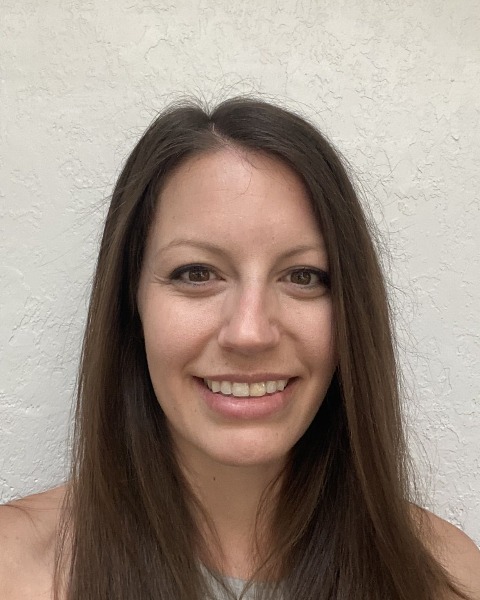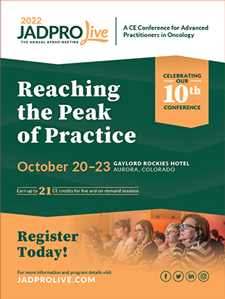Back


Clinical Posters
JL1010C: Development of an Overnight Virtual Advanced Practice Provider to Support Night Shift On-Site Staffing
Saturday, October 22, 2022
10:00 AM – 11:00 AM ET

Has Audio

Ashley Sutherland, RN, MSN, AGACNP (she/her/hers)
Nurse Practitioner
University of Colorado Hospital
Aurora, Colorado, United States
Poster Presenter(s)
PURPOSE
The demands of healthcare workers continue to be pushed to the limit, especially over the past few years during such a significant event as the COVID-19 pandemic. Studies suggest that nearly half of all healthcare providers are experiencing burnout at any given time . Increasing workload and patient complexity in the setting of consistent staff turnover can lead to burnout, low morale, and thus poor quality of care provided. Typically, healthcare providers work in the confines of a physical space, caring for patients via face-to-face interactions, utilizing physical examinations, and recording medical histories. However, the need for an alternative mode to provide care was realized during the COVID-19 pandemic when staff were frequently forced to isolate due to illness and exposure, leaving units understaffed and staff overworked. Night shift specifically tends to have a higher provider-to-patient ratio with fewer resources available for support. Telemedicine is typically used in the outpatient setting with similar outcomes to in-person healthcare visits. At the University of Colorado Hospital on the bone marrow transplant unit during the pandemic, a new APP role was developed to implement telemedicine in the inpatient setting. The goal of this role was to support the overnight provider to dedicate increased attention toward higher acuity patients, provide adequate time for evaluation and management of new admissions, improve provider morale, decrease burnout, and remove tasks that may take concentration away from complex patients. Lastly, the utilization of this virtual provider provided nursing staff a resource for less urgent medical issues and questions that did not require in-person patient evaluation.
DESIGN AND PROCESS
Advanced practice providers (consisting of both NPs and PAs) who currently staff the Bone Marrow Transplant unit at University of Colorado Hospital were given the option to provide virtual support in conjunction with the overnight provider shift. The Overnight Virtual Advanced Practice Provider (OVAPP) worked a 6-hour shift during the overnight shift. This APP triaged patient phone calls, monitored the emergency department track board for BMT patients, answered consulting calls and requests for transfer from outside hospital physicians, and responded to nurse requests via secure communication through the hospital's electronic medical record. OVAPPs, night providers, and nursing staff were then surveyed to evaluate outcomes related to the addition of the virtual provider.
FINDINGS
Overall increased employee satisfaction from APPs and nursing staff secondary to increased support. While the development of this role is still in the early phases, preliminary survey results have shown that continued development of this role is promising and could revolutionize the care delivery system for both patients and providers. 100% of providers surveyed agreed that the OVAPP role assisted night shift providers in providing improved quality of care and reduced burden on night shift providers, while 75% of providers agreed that OVAPP reduced provider burnout and improved overall job satisfaction. Nurses agreed with the results from our APP survey. 90% of nurses agreed that having an OVAPP on service improved the quality of care provided to patients and improved nurses' ability to respond to patient needs and decreased delays in care.
CONCLUSIONS
Telemedicine has been utilized in the outpatient setting for several years, providing greater flexibility and access to care for patients. Implementing telemedicine to support the inpatient provider is a novel approach to inpatient care that provides better care for patients while also supporting overnight providers and nurses.
RECOMMENDATIONS
Areas of future research include evaluating the quality of patient care directly, noting the speed of responses to nursing requests that would ideally lead to improved outcomes and patient satisfaction.
The demands of healthcare workers continue to be pushed to the limit, especially over the past few years during such a significant event as the COVID-19 pandemic. Studies suggest that nearly half of all healthcare providers are experiencing burnout at any given time . Increasing workload and patient complexity in the setting of consistent staff turnover can lead to burnout, low morale, and thus poor quality of care provided. Typically, healthcare providers work in the confines of a physical space, caring for patients via face-to-face interactions, utilizing physical examinations, and recording medical histories. However, the need for an alternative mode to provide care was realized during the COVID-19 pandemic when staff were frequently forced to isolate due to illness and exposure, leaving units understaffed and staff overworked. Night shift specifically tends to have a higher provider-to-patient ratio with fewer resources available for support. Telemedicine is typically used in the outpatient setting with similar outcomes to in-person healthcare visits. At the University of Colorado Hospital on the bone marrow transplant unit during the pandemic, a new APP role was developed to implement telemedicine in the inpatient setting. The goal of this role was to support the overnight provider to dedicate increased attention toward higher acuity patients, provide adequate time for evaluation and management of new admissions, improve provider morale, decrease burnout, and remove tasks that may take concentration away from complex patients. Lastly, the utilization of this virtual provider provided nursing staff a resource for less urgent medical issues and questions that did not require in-person patient evaluation.
DESIGN AND PROCESS
Advanced practice providers (consisting of both NPs and PAs) who currently staff the Bone Marrow Transplant unit at University of Colorado Hospital were given the option to provide virtual support in conjunction with the overnight provider shift. The Overnight Virtual Advanced Practice Provider (OVAPP) worked a 6-hour shift during the overnight shift. This APP triaged patient phone calls, monitored the emergency department track board for BMT patients, answered consulting calls and requests for transfer from outside hospital physicians, and responded to nurse requests via secure communication through the hospital's electronic medical record. OVAPPs, night providers, and nursing staff were then surveyed to evaluate outcomes related to the addition of the virtual provider.
FINDINGS
Overall increased employee satisfaction from APPs and nursing staff secondary to increased support. While the development of this role is still in the early phases, preliminary survey results have shown that continued development of this role is promising and could revolutionize the care delivery system for both patients and providers. 100% of providers surveyed agreed that the OVAPP role assisted night shift providers in providing improved quality of care and reduced burden on night shift providers, while 75% of providers agreed that OVAPP reduced provider burnout and improved overall job satisfaction. Nurses agreed with the results from our APP survey. 90% of nurses agreed that having an OVAPP on service improved the quality of care provided to patients and improved nurses' ability to respond to patient needs and decreased delays in care.
CONCLUSIONS
Telemedicine has been utilized in the outpatient setting for several years, providing greater flexibility and access to care for patients. Implementing telemedicine to support the inpatient provider is a novel approach to inpatient care that provides better care for patients while also supporting overnight providers and nurses.
RECOMMENDATIONS
Areas of future research include evaluating the quality of patient care directly, noting the speed of responses to nursing requests that would ideally lead to improved outcomes and patient satisfaction.

